Content Menu
● Traditional Maceration
● Soxhlet Extraction
● Ultrasonication Extraction
● Microwave Irradiation Method
● Supercritical Fluid Extraction (SFE)
● Industrial Tea Extraction System
● Step-by-Step Guide to Green Tea Extraction
● Factors Affecting Extraction Efficiency
● Optimizing Extraction Parameters
● Applications of Green Tea Extract
● Conclusion
● FAQ About Green Tea Extraction
>> 1. What is the best solvent for extracting green tea?
>> 2. How does temperature affect green tea extraction?
>> 3. How long should green tea be extracted?
>> 4. What are the benefits of using ultrasonication for green tea extraction?
>> 5. Is supercritical fluid extraction safe for green tea extraction?
● Citations:
Green tea, derived from the Camellia sinensis plant, stands out as a widely consumed beverage celebrated for its potential health benefits, which range from boosting immunity to preventing cancer[1]. Extracting the beneficial compounds from green tea leaves involves several methods, each with its unique approach and efficiency. This article explores various extraction techniques, providing a comprehensive guide for both small-scale and industrial applications.
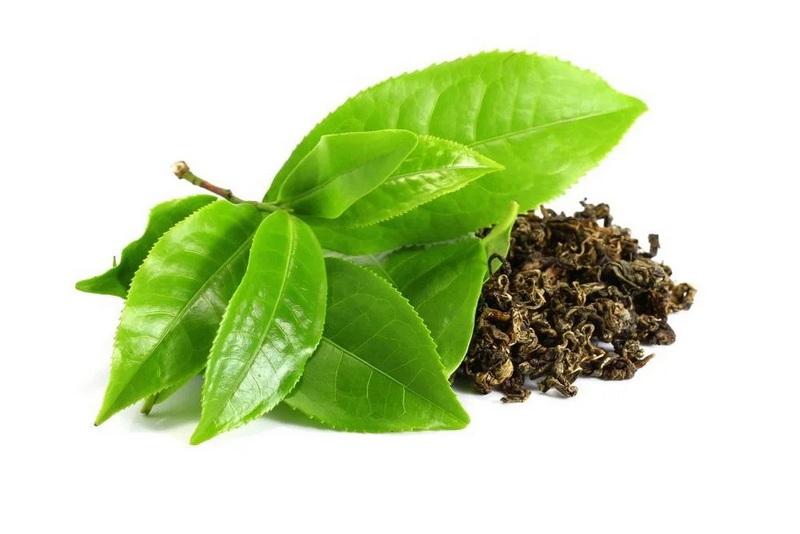
Traditional Maceration
Maceration is one of the simplest methods for extracting compounds from green tea leaves. This process involves soaking the leaves in a solvent, typically water or ethanol, for an extended period to allow the solvent to draw out the desired compounds[1].
Process:
1. Preparation: Begin by drying and crushing the green tea leaves to increase the surface area available for extraction.
2. Soaking: Submerge the crushed leaves in the selected solvent (e.g., ethanol) in a container[1]. The solvent-to-tea ratio is crucial; generally, 200 mL of solvent is used for every 100 g of tea leaves[1].
3. Time and Temperature: Allow the mixture to sit for 24-48 hours at room temperature, stirring occasionally to enhance the extraction process.
4. Filtration: After soaking, filter the mixture to remove the solid tea leaves. A muslin cloth or a fine sieve can be used for this purpose.
5. Evaporation: Evaporate the solvent from the filtrate using a rotary evaporator at 60°C to obtain the crude extract[1].
6. Drying: Transfer the extract to a flat-bottom dish and dry it at 105°C for about 3 hours to ensure all solvent residues are removed[1].
7. Cooling and Weighing: Cool the dried extract in a desiccator for about 1 hour and weigh it to determine the yield[1].
Advantages:
-Simple and cost-effective, requiring minimal equipment.
-Suitable for small-scale extraction.
Disadvantages:
-Lower extraction efficiency compared to more advanced methods[1].
-Longer extraction times are needed.
-May not extract all desired compounds effectively.
Soxhlet Extraction
Soxhlet extraction is a more efficient method than maceration, primarily used in laboratory settings to extract compounds from solid materials.
Process:
1. Preparation: As with maceration, dry and grind the green tea leaves to increase the surface area.
2. Loading: Place the ground tea leaves into a porous thimble made of filter paper or cellulose.
3. Setup: Insert the thimble into the main chamber of the Soxhlet extractor, which is placed on top of a flask containing the solvent (e.g., ethanol).
4. Heating: Heat the solvent in the flask. The solvent evaporates and moves up through a distillation arm into the condenser, where it cools and drips back down into the chamber containing the tea leaves.
5. Extraction: The solvent fills the chamber, gradually extracting the soluble compounds from the tea leaves. Once the chamber is full, the solvent is siphoned back down into the flask, carrying the extracted compounds with it.
6. Repeating the Cycle: This cycle repeats multiple times, ensuring efficient extraction.
7. Evaporation: After extraction, the solvent is evaporated from the flask using a rotary evaporator, leaving behind the concentrated green tea extract.
Advantages:
-Higher efficiency than maceration due to continuous extraction with fresh solvent.
-Suitable for extracting a wide range of compounds.
Disadvantages:
-Longer extraction times compared to newer methods like ultrasonication or microwave extraction[1].
-Requires specialized equipment.
-The high temperatures involved can degrade some heat-sensitive compounds.
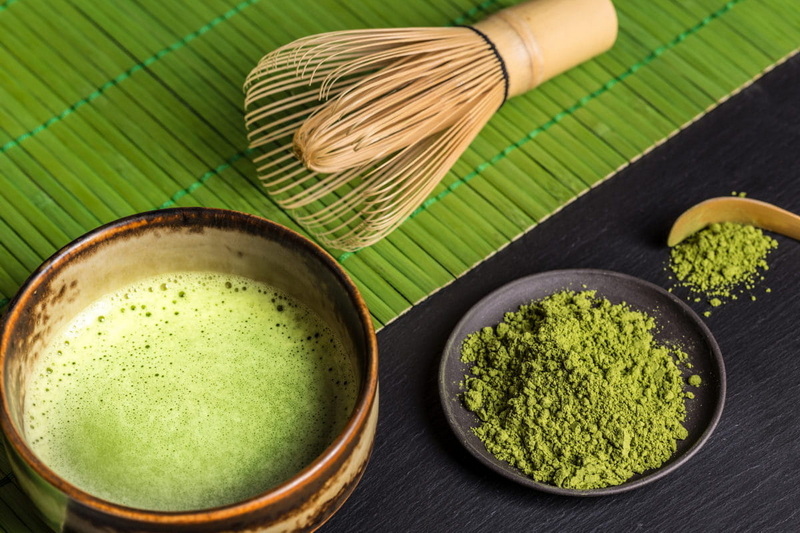
Ultrasonication Extraction
Ultrasonication extraction uses sound waves to enhance the extraction process, making it faster and more efficient than traditional methods.
Process:
1. Preparation: Prepare the green tea leaves by drying and grinding them.
2. Mixing: Mix the ground tea leaves with a solvent (e.g., ethanol) in a container. A typical ratio is 200 mL of solvent for 100 g of tea leaves[1].
3. Ultrasonication: Place the container in an ultrasonic bath or use an ultrasonic probe. Apply ultrasonic waves for a specific period (e.g., 30-60 minutes)[1]. The ultrasonic waves create cavitation bubbles that disrupt the plant cell walls, facilitating the release of compounds.
4. Filtration: Filter the mixture to remove solid particles.
5. Evaporation: Evaporate the solvent using a rotary evaporator to obtain the concentrated extract.
6. Drying: Dry the extract to remove any remaining solvent[1].
Advantages:
-Higher extraction efficiency compared to maceration and Soxhlet extraction[1].
-Shorter extraction times.
-Can be performed at lower temperatures, preserving heat-sensitive compounds.
Disadvantages:
-Requires an ultrasonic bath or probe, which can be costly.
-The energy input needs to be optimized to avoid degradation of compounds due to excessive heat.
Microwave Irradiation Method
Microwave-assisted extraction (MAE) uses microwave energy to heat the solvent and sample, accelerating the extraction of compounds from green tea leaves[1].
Process:
1. Preparation: Dry and grind the green tea leaves.
2. Mixing: Mix the ground tea leaves with a solvent (e.g., ethanol) in a microwave-compatible container[1].
3. Irradiation: Place the container in a microwave extractor and set the parameters (e.g., power level, extraction time). The microwave energy heats the solvent and the tea leaves, enhancing the release of compounds.
4. Filtration: Filter the mixture to remove solid particles.
5. Evaporation: Evaporate the solvent using a rotary evaporator.
6. Drying: Dry the extract to remove any remaining solvent[1].
Advantages:
- Very high extraction efficiency[1].
- Rapid extraction times.
- Reduced solvent usage.
Disadvantages:
- Requires specialized microwave extraction equipment.
- Careful optimization is needed to prevent overheating and degradation of compounds.
Supercritical Fluid Extraction (SFE)
Supercritical Fluid Extraction (SFE) is an advanced method that uses a supercritical fluid, typically carbon dioxide (CO2), as the solvent. Supercritical CO2 has properties of both a liquid and a gas, making it an excellent solvent for extracting a wide range of compounds.
Process:
1. Preparation: Dry and grind the green tea leaves.
2. Loading: Load the ground tea leaves into the extraction vessel of the SFE system.
3. Extraction: Pump supercritical CO2 into the vessel at a controlled temperature and pressure. The supercritical CO2 penetrates the tea leaves and dissolves the desired compounds.
4. Separation: The CO2 and extracted compounds are then passed through a separator, where the pressure is reduced, causing the CO2 to revert to a gaseous state and the extracted compounds to precipitate out.
5. Collection: Collect the pure extract.
Advantages:
- High extraction efficiency and selectivity.
- Uses a non-toxic solvent (CO2).
- Can be used to extract heat-sensitive compounds due to lower operating temperatures.
Disadvantages:
- High initial equipment costs.
- Requires skilled operators.
Industrial Tea Extraction System
For large-scale industrial applications, specialized tea extraction systems are employed to handle the continuous and automated extraction of tea[2].
Types of Industrial Extraction Systems:
1. Kneader Type: Suitable for various types of tea, including black tea, green tea, and Chinese tea[2].
2. Vertical Pressure Type: Ideal for extracting tea and coffee, this system enhances extraction through vertical pressure[2].
3. Traditional Type: A system designed to handle a variety of tea types effectively[2].
Features of Industrial Systems:
- Automation: These systems automate all procedures from tea measuring and affusion to continuous extraction, tea recycling, and dust discharge[2].
- Capacity: Industrial systems can process large volumes, with disposing capabilities up to 6000L/H[2].
- Control: Precise control over extraction time (5-30 minutes) and temperature (60-100°C)[2].
Advantages:
- High throughput and efficiency.
- Continuous operation, reducing downtime.
- Automated control ensures consistent product quality.
Disadvantages:
- High initial investment.
- Requires significant space and infrastructure.
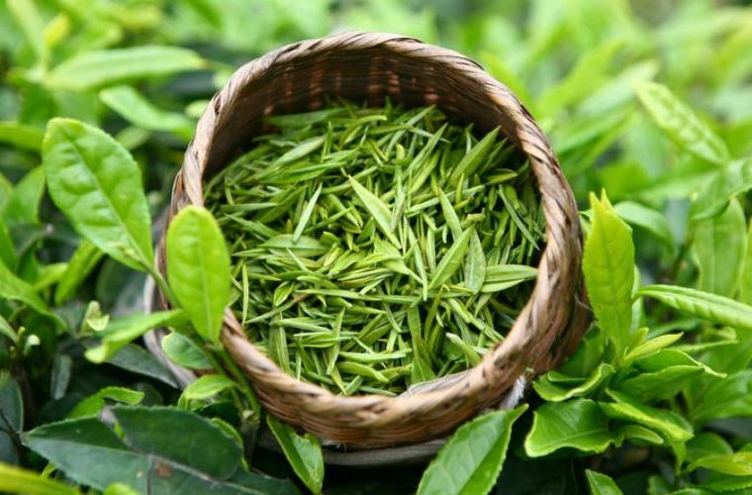
Step-by-Step Guide to Green Tea Extraction
Here's a simplified step-by-step guide to extracting green tea at home using readily available materials.
Materials:
- Green tea leaves
- Ethanol or distilled water
- Glass container
- Muslin cloth or fine sieve
- Pot or hot plate
- Glass dishes
Procedure:
1. Preparation:
- Dry the green tea leaves to reduce moisture content.
- Crush the leaves to increase surface area.
2. Extraction:
- Place the crushed tea leaves in a glass container.
- Pour ethanol or distilled water over the leaves, ensuring they are fully submerged. Use a ratio of 100g of tea leaves to 200ml of solvent[1].
- Seal the container and let it sit at room temperature for 24-48 hours, stirring occasionally.
3. Filtration:
- Strain the mixture through a muslin cloth or fine sieve into a clean container to remove the solid tea leaves.
4. Concentration:
- Pour the filtered liquid into a pot and heat gently on a hot plate or stove to evaporate the solvent. Ensure the temperature does not exceed 60°C to preserve the beneficial compounds.
- Continue heating until a concentrated extract remains.
5. Drying:
- Transfer the concentrated extract to a glass dish.
- Allow the extract to air dry completely, or use a low-temperature oven (around 40°C) to speed up the process.
6. Storage:
- Once dried, store the green tea extract in an airtight container in a cool, dark place.
Factors Affecting Extraction Efficiency
Several factors can influence the efficiency of green tea extraction, including:
- Solvent Type: The choice of solvent significantly affects the yield and composition of the extract. Ethanol and water are commonly used, with ethanol often extracting a broader range of compounds[1].
- Temperature: Higher temperatures can increase the extraction rate but may also degrade heat-sensitive compounds. Optimal temperatures usually range from 60-100°C[4].
- Extraction Time: Longer extraction times can increase yield but may also lead to the extraction of undesirable compounds.
- Particle Size: Smaller particle sizes increase the surface area, facilitating better solvent penetration and higher extraction rates.
- Solvent-to-Solid Ratio: An appropriate solvent-to-solid ratio ensures efficient extraction. A ratio of 200 mL of solvent to 100 g of tea leaves is often used[1].
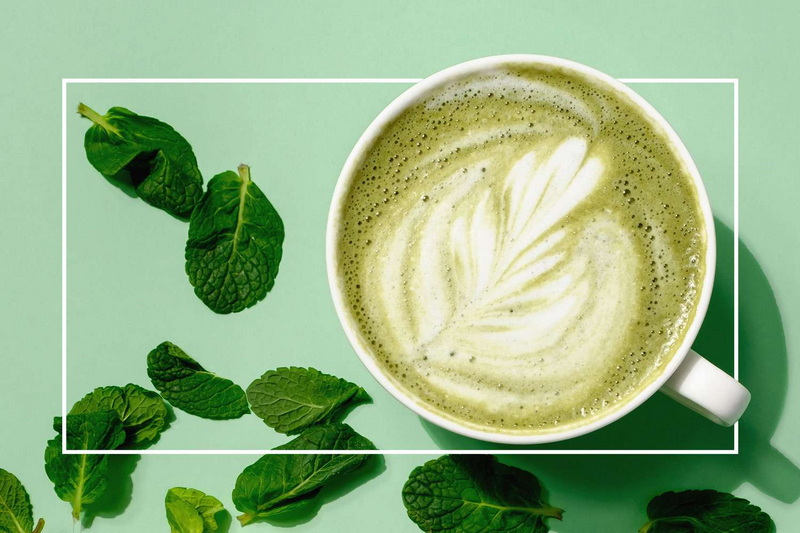
Optimizing Extraction Parameters
Optimizing the extraction parameters is crucial for maximizing the yield and quality of the green tea extract.
- Temperature Control: Maintaining the temperature between 60-100°C can improve the extraction efficiency of non-polymer catechins and provide good taste[4].
- Extraction Time: An extraction time of 1-60 minutes is generally preferred to ensure sufficient elution of non-polymer catechins while avoiding thermal denaturation[4].
- Solvent Selection: Water is a preferred solvent for extracting green tea[4].
- Pre-treatment: Applying pre-treatment methods such as enzyme inactivation and CTC processing can enhance the extraction process[7].
- Mass Ratio: Keeping the mass ratio of the extraction solvent to the tea leaves at 30 or less can prevent the increase of gallate percentage in non-polymer catechins, which reduces bitterness[4].
Applications of Green Tea Extract
Green tea extract is widely used in various industries due to its beneficial properties:
- Dietary Supplements: Used for its antioxidant and anti-inflammatory effects.
- Cosmetics: Incorporated into skincare products for its anti-aging and skin-protective properties.
- Food and Beverages: Used as a natural preservative and flavoring agent.
- Pharmaceuticals: Studied for its potential therapeutic effects in preventing chronic diseases.
Conclusion
Extracting compounds from green tea leaves can be achieved through various methods, each with its own advantages and disadvantages. Traditional methods like maceration and Soxhlet extraction are suitable for small-scale operations but are less efficient. Advanced techniques such as ultrasonication, microwave irradiation, and supercritical fluid extraction offer higher efficiency and faster extraction times, making them ideal for industrial applications. By understanding the different extraction methods and optimizing the key parameters, it is possible to obtain high-quality green tea extracts for a wide range of applications.
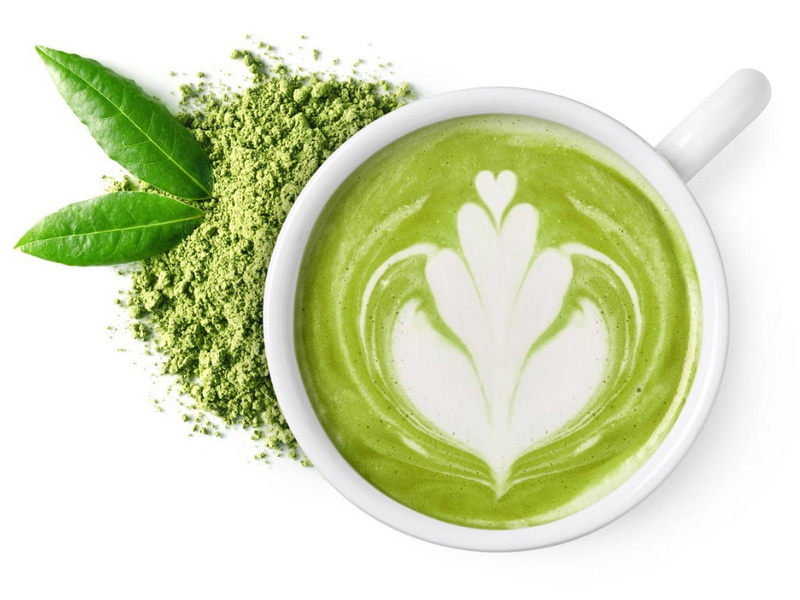
FAQ About Green Tea Extraction
1. What is the best solvent for extracting green tea?
The best solvent for extracting green tea depends on the specific compounds you want to extract. Water and ethanol are commonly used. Water is preferred for extracting catechins, while ethanol can extract a broader range of compounds[4].
2. How does temperature affect green tea extraction?
Temperature significantly affects the extraction process. Higher temperatures increase the extraction rate but can also degrade heat-sensitive compounds. Optimal temperatures usually range from 60-100°C[4].
3. How long should green tea be extracted?
The extraction time depends on the method used. For traditional methods like maceration, it may take 24-48 hours. Advanced methods like ultrasonication and microwave extraction can take as little as 30-60 minutes[1]. An extraction time of 1-60 minutes is generally preferred to avoid thermal denaturation[4].
4. What are the benefits of using ultrasonication for green tea extraction?
Ultrasonication enhances extraction efficiency by using sound waves to disrupt plant cell walls, facilitating the release of compounds. It also reduces extraction time and can be performed at lower temperatures, preserving heat-sensitive compounds[1].
5. Is supercritical fluid extraction safe for green tea extraction?
Yes, supercritical fluid extraction (SFE) is considered safe because it uses non-toxic carbon dioxide (CO2) as a solvent. It also offers high extraction efficiency and selectivity and can be used to extract heat-sensitive compounds due to lower operating temperatures.
Citations:
[1] https://biotech-asia.org/pdf/vol10no1/BBRAV10I01P383-386.pdf
[2] https://www.taibeco.com.tw/en/product/pd/161
[3] https://patents.google.com/patent/CN1923021A/zh
[4] https://patents.google.com/patent/US7910147B2/en
[5] https://patents.google.com/patent/CN104004593A/en
[6] https://patents.google.com/patent/CN107397225A/zh
[7] http://ankurherbal.net/greentea.html
[8] https://www.shpilotech.com/tea-extraction-machine/
































